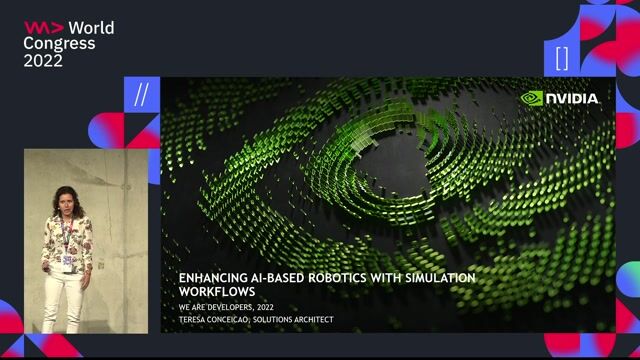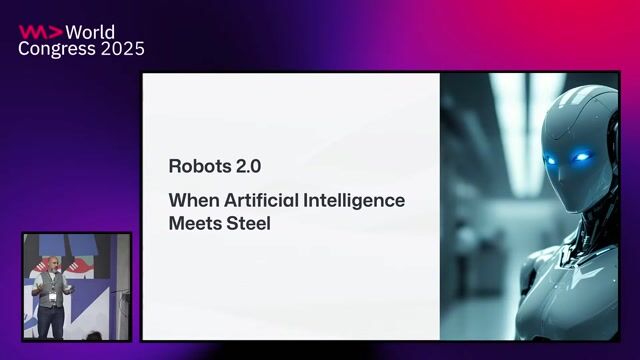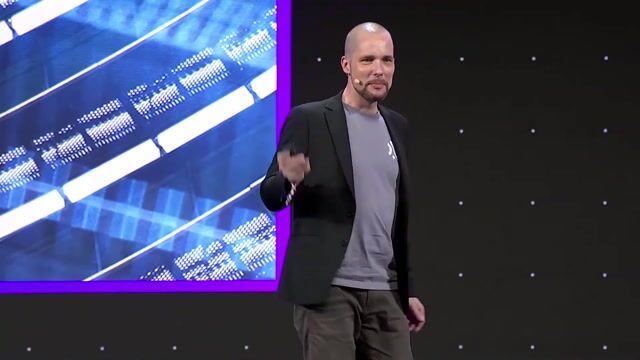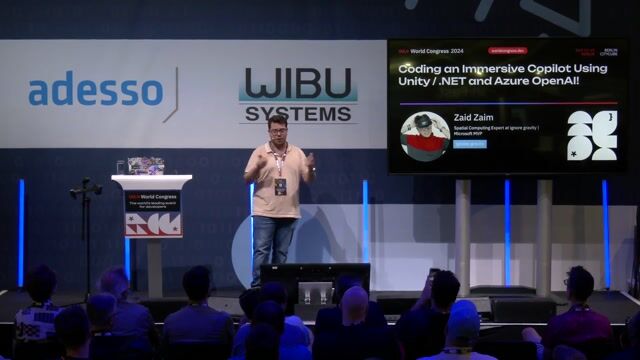Alexander Schwarz
How Robots Learn to be Robots
#1about 3 minutes
The evolution from digital agents to physical AI
Physical AI extends digital agentic systems into the physical world, enabling robots to understand and act based on sensory input and instructions.
#2about 4 minutes
The three-computer solution for robotics challenges
The high cost of data and physical testing is solved by a three-computer workflow using simulation for data generation, a separate system for training, and simulation again for validation.
#3about 3 minutes
Understanding reinforcement and imitation learning for robots
Robots learn skills through reinforcement learning by trial and error with rewards, or through imitation learning by mimicking expert demonstrations.
#4about 2 minutes
Building digital twins with Omniverse and Isaac Sim
NVIDIA Omniverse is a development platform based on OpenUSD for creating digital twins, with Isaac Sim providing a dedicated application for robot simulation.
#5about 2 minutes
Scaling training data with simulated teleoperation
A small number of human demonstrations collected via teleoperation in Isaac Sim can be algorithmically scaled into a large, diverse, and photorealistic synthetic dataset.
#6about 3 minutes
Generating photorealistic data with Cosmos foundation models
Cosmos is a platform of world foundation models, including Cosmos Transfer, which uses control nets to transform basic simulation outputs into photorealistic videos.
#7about 3 minutes
Generating novel robot scenarios with Isaac GR00T Dreams
The Isaac GR00T Dreams workflow uses a post-trained Cosmos Predict model to generate new robot behaviors from a single image, which are then filtered and labeled to create training data.
#8about 2 minutes
A hybrid data strategy for robust foundation models
Robust robot foundation models like Isaac GR00T are trained by combining vast internet video data, high-quality human demonstrations, and large-scale synthetic data.
#9about 1 minute
Testing and deploying robots in large-scale simulations
Before real-world deployment, trained robot models can be rigorously tested at scale within digital twins of complex environments like factories using OpenUSD.
Related jobs
Jobs that call for the skills explored in this talk.
Featured Partners
Related Videos
 30:57
30:57Enhancing AI-based Robotics with Simulation Workflows
Teresa Conceicao
 28:19
28:19Robots 2.0: When artificial intelligence meets steel
Thomas Tomow
 35:16
35:16How AI Models Get Smarter
Ankit Patel
 25:14
25:14The shadows of reasoning – new design paradigms for a gen AI world
Jonas Andrulis
 31:50
31:50Coding an Immersive Copilot using Unity / .NET and Azure OpenAI!
Zaid Zaim
 29:27
29:27The Future Past of Technology - A Game Developers POV
Johanna Pirker
 28:09
28:09The AI-Ready Stack: Rethinking the Engineering Org of the Future
Jan Oberhauser, Mirko Novakovic, Alex Laubscher, Keno Dreßel
 30:58
30:58From Code to Motion: Building an Autonomous Hat-Hunting Robot with Kubernetes & ML
Daniel Brintzinger
From learning to earning
Jobs that call for the skills explored in this talk.
Robotics Simulation Engineer (Sim2Real focus) (m/f/d)
Agile Robots Ag
München, Germany
C++
Python
Unreal Engine
Research Engineer: Active On-line Training for Deep Surrogates
Inria
Canton de Saint-Martin-d’Hères, France
Remote
€32K
GIT
Linux
Python
+1





